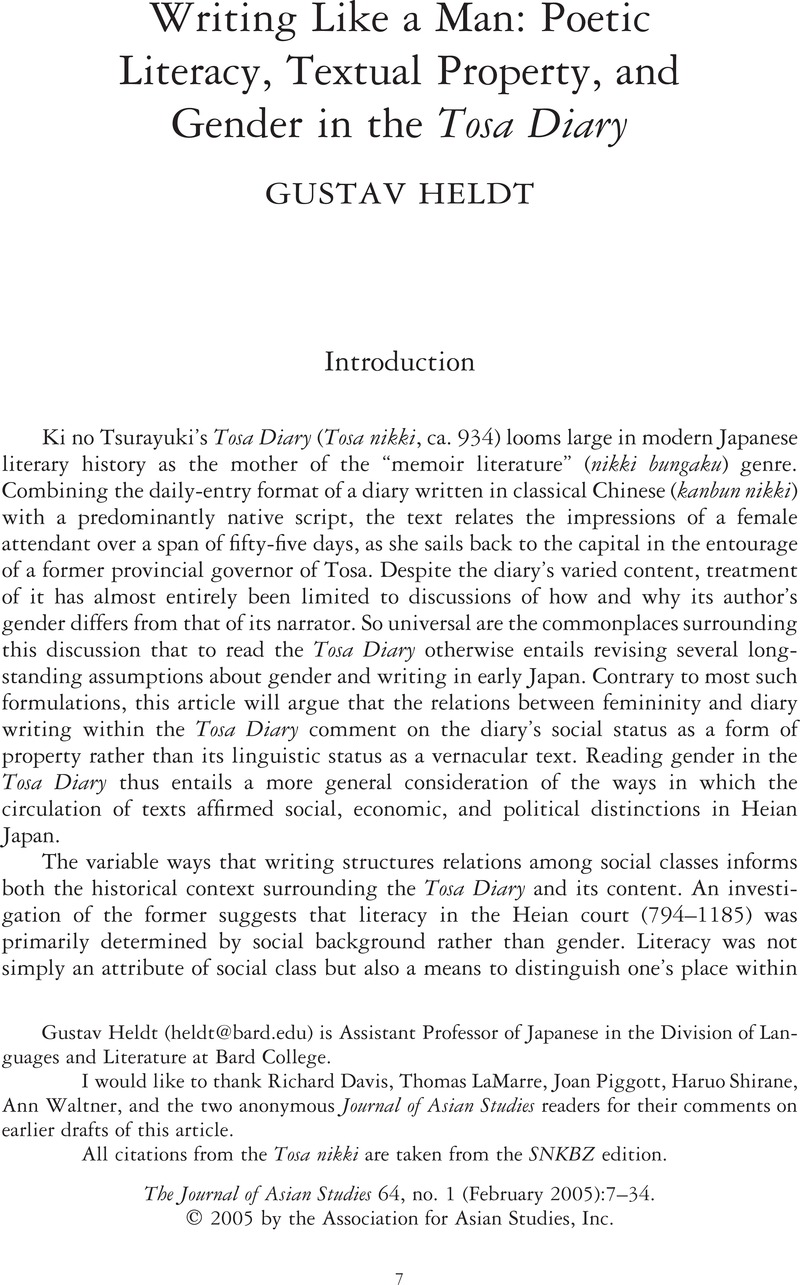Crossref Citations
This article has been cited by the following publications. This list is generated based on data provided by Crossref.
Shirane, Haruo
Suzuki, Tomi
and
Lurie, David
2015.
The Cambridge History of Japanese Literature.
Heldt, Gustav
2017.
Longing for home:The Tosa Diary's funa utaand Heian popular song.
Japan Forum,
Vol. 29,
Issue. 4,
p.
450.
Robertson, Wesley C.
and
Mihic, Tamaki
2022.
Introduction to Special Issue on Writing-Restricted Variation in Japanese.
Japanese Studies,
Vol. 42,
Issue. 1,
p.
1.
Gonçalves Pinto, Felipe Chaves
2025.
Das intersecções entre o nikki (diário japonês) e o diário eurocêntrico.
Literatura: teoría, historia, crítica,
Vol. 27,
Issue. 1,



